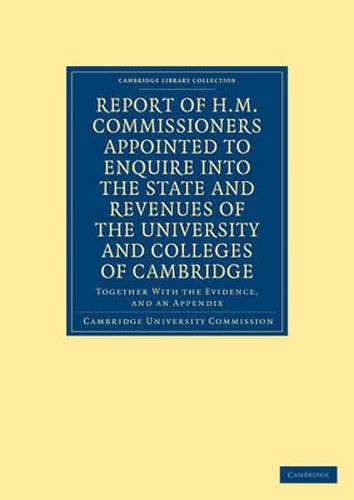Readings Newsletter
Become a Readings Member to make your shopping experience even easier.
Sign in or sign up for free!
You’re not far away from qualifying for FREE standard shipping within Australia
You’ve qualified for FREE standard shipping within Australia
The cart is loading…






This report of the influential Royal Commission was first published in 1852. It resulted from a thorough inquiry ‘into the State, Discipline, Studies, and Revenues of the University and Colleges of Cambridge’ overseen by distinguished Victorian figures including the Bishop of Chester, George Peacock, Sir John F. W. Herschel, Sir John Romilly and Adam Sedgwick. It includes details relating to the foundation and constitution of the University; employed positions, from Chancellor to Senate members; academic degrees offered; professorships and faculty boards; financial particulars, such as tuition fees, fellowships, and revenues; and facilities, including colleges, laboratories, museums, libraries, hostels and the University Press. This comprehensive account of the material and human assets of the University of Cambridge during the nineteenth century sheds light on the educational reforms which were then gathering pace. It will be of interest to social and economic historians of the Victorian period, and of the university.
$9.00 standard shipping within Australia
FREE standard shipping within Australia for orders over $100.00
Express & International shipping calculated at checkout
Stock availability can be subject to change without notice. We recommend calling the shop or contacting our online team to check availability of low stock items. Please see our Shopping Online page for more details.
This report of the influential Royal Commission was first published in 1852. It resulted from a thorough inquiry ‘into the State, Discipline, Studies, and Revenues of the University and Colleges of Cambridge’ overseen by distinguished Victorian figures including the Bishop of Chester, George Peacock, Sir John F. W. Herschel, Sir John Romilly and Adam Sedgwick. It includes details relating to the foundation and constitution of the University; employed positions, from Chancellor to Senate members; academic degrees offered; professorships and faculty boards; financial particulars, such as tuition fees, fellowships, and revenues; and facilities, including colleges, laboratories, museums, libraries, hostels and the University Press. This comprehensive account of the material and human assets of the University of Cambridge during the nineteenth century sheds light on the educational reforms which were then gathering pace. It will be of interest to social and economic historians of the Victorian period, and of the university.